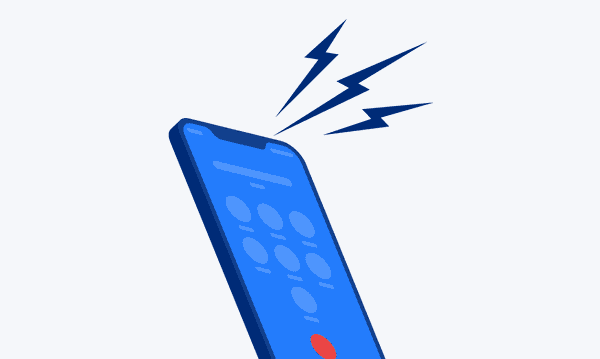How to Deal with Angry Customers
Unhappy customers are unavoidable — a nightmare for your customer support team. In this article, we will share tips on how to deal with angry customers effectively so that you can increase customer satisfaction and strengthen your company’s reputation and bottom line.
6 min read

Elizaveta Komarova
May 24, 2021

Why Worry About Angry Customers?
Organizations cannot afford to simply dismiss upset customers, for multiple reasons. First of all, they are a big source of stress for your customer support department, as well as for all the other staff members and managers they interact with. Unless you give these employees the tools they need to deal with these situations, you are likely to end up with a frustrated customer support service and demoralized teams across your business, which can hurt both productivity and talent retention.
Moreover, an angry customer can easily post negative reviews on social networks, business review sites, and other places across the internet. This negative feedback can be very hard to counteract. And even when a customer’s comment is unfair or even false, you may find you cannot get it removed. As a result, negative reviews can significantly damage your company’s brand and cost you sales.
Therefore, it’s essential to know how to handle irate customers properly and resolve their complaints promptly. If you do, you may well find that the client gains respect for your company and might even become its champion online, instead of its nemesis.
Why Do Customers Get Angry?
The first step in resolving an issue is understanding why the customer is upset. Here are some of the most common reasons:
- A problem with your product or service. All too often, products and services simply don’t live up to the customer’s expectations. In this case, your team should be sure to gather detailed information about the satisfaction gap. If possible, supplement the customer’s description with pictures or a screenshot, so that you can take steps to prevent other customers from experiencing the same issue.
- A poor support experience. Customers who are already a bit upset about a problem can easily get even more upset when they have to wait on hold for a long time, or the team member they talk to is slow to resolve the issue or doesn’t seem to be listening carefully to what they have to say. Training your customer support team properly and ensuring adequate staffing can help you avoid these issues.
- Pricing concerns. Customers compare products, services, and prices all the time. If they discover that your product or service costs more than a competitor’s or believe it fails to deliver sufficient quality for the price, they naturally get angry. Deep product management research will help your company understand the market and price its products and services fairly. In addition, all customer support specialists should know how to justify the prices by articulating the value. They should also be empowered to appease angry customers with discounts or alternative products.
- Personal reasons. Customers are human beings with lives far beyond your product or service. Sometimes angry clients aren’t really upset with you; they’re angry about something else and taking it out on you. Responding with empathy can dramatically reduce anger and help you peacefully resolve difficult situations with customers.
Customer Service Tips for How to Handle Angry Customers
To maximize your effectiveness in turning unhappy customers around, we advise you to train your customer support team to do the following:
Stay calm
It really matters what you say and how you say it. It’s essential to resist the natural urge to be defensive, and not to say anything you’ll regret later. Take customer’s issue seriously, but not personally.
Specifically, take some deep breaths and be friendly. Kill your angry customer with kindness: Say something like,
“Please don’t worry; I’m sure we can find a solution.”
Listen and take responsibility
Good customer support reps let customers have their say. You need to actively concentrate on the client’s words and stay engaged to find out exactly why the customer is upset.
Then, take responsibility for what happened. This tactic will make even the angriest customer feel a bit of guilt and help to ease tensions. For example, you might say,
“I’m sorry you don’t like the service. Let’s review what happened and what we can do for you.”
By showing that you understand the customer’s point of view, you instantly help them cool down.
Find the root cause
Next, ask clarifying questions to uncover the root issue. “I don’t like your service” is too vague to be useful, so try to uncover the specifics of why the customer is dissatisfied. Assure them that these details are necessary to fix the problem — both for them and for others. Here are some questions that are often useful:

Offer a specific solution that satisfies the customer
Unhappy customers are seldom mollified by a generic apology like,
“We’re sorry for the inconvenience.”
But more often than you might expect, a genuine apology that truly acknowledges the specifics of the issue can go quite a long way.
If the customer isn’t satisfied with an apology, engage them in identifying a solution. Ask open-ended questions to uncover their expectations. For example, ask them:
“What would be your ideal outcome?”
Even if you lose money with a particular client, it’s still worth coming to a solution that leaves the customer satisfied, whether that’s to replace the product, return the customer’s money, or something else. Be very clear about what you’re offering, and be sure to apologize again. For example:
“We are very sorry that you are disappointed with our service. We can offer a free service upgrade or return the money you paid.”
By offering a specific solution, you show that you take responsibility and share the customer’s disappointment. Apologies are free, and whatever money you spend to make customers happy pays off in increased sales and a strong reputation for your brand.
Ask for feedback
Many people are eager to find companies with great customer service. If you’ve resolved a problem for a customer who left negative feedback online, ask them to consider revising their review. For instance, you might ask them to delete their negative comment, or, better yet, to update it to explain how your company stood behind its product or service and make the customer happen in the end.
Document the lessons learned
When everything has been resolved, take time to think over what your company can learn from the upset customer’s experience. What should you do to prevent such situations in the future? How can you prepare your customer support team to respond quickly and effectively to clients with similar problems? Do they know the best way to deal with an angry customer? While it is always disappointing to hear from mad customers, keep in mind that each one is an opportunity to learn how to do better.
By following these simple steps for working with angry customers, you can not only minimize negative reviews of your company but actually solidify your reputation and increase sales of your products or services.


